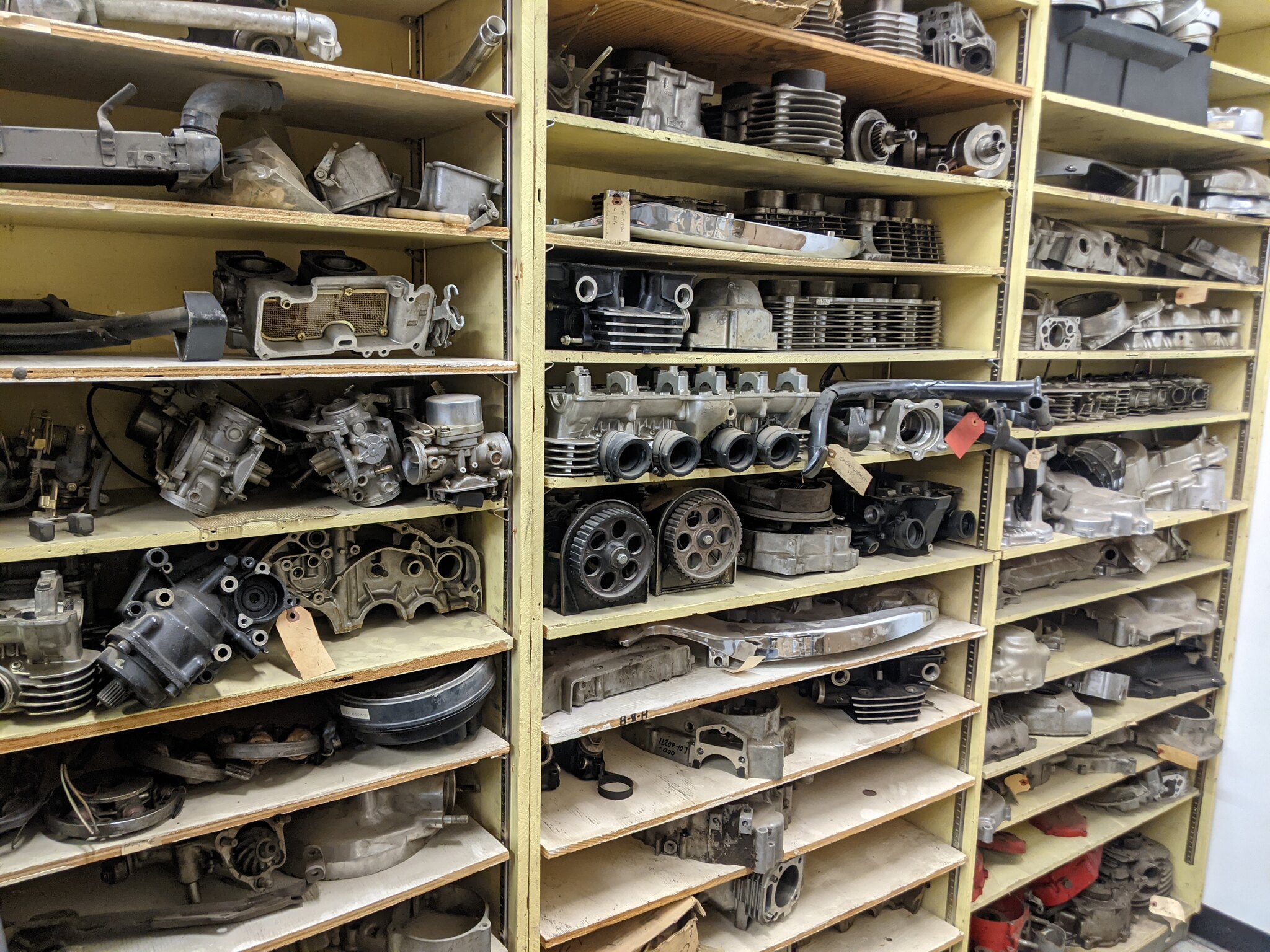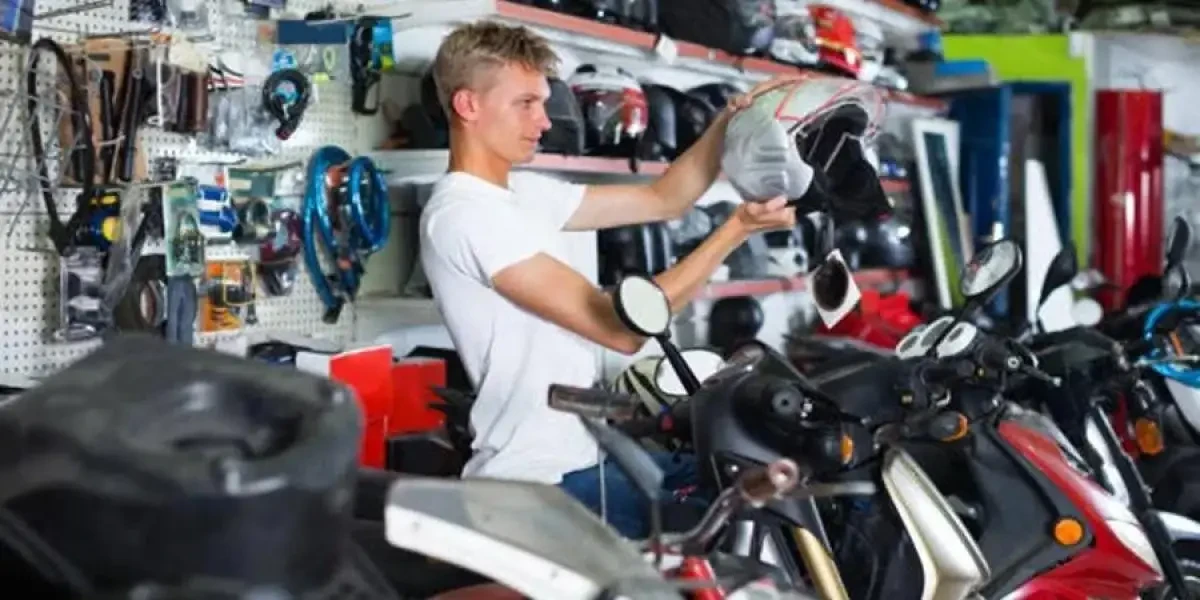Crucial Motorcycle Parts NZ for Peak Performance and Safety And Security
Crucial Motorcycle Parts NZ for Peak Performance and Safety And Security
Blog Article
Recognizing the Vital Parts of a Motorbike: A Comprehensive Overview for Enthusiasts
For motorbike fanatics wanting to raise their riding experience and ensure their bikes run efficiently, recognizing the vital components of a motorbike is extremely important. Each component, from the engine's intricate operations to the essential function of the stopping systems, not only influences efficiency but likewise safety and comfort. This guide will certainly go through the basic parts that every motorcyclist should recognize with, making it possible for notified choices in both maintenance and potential upgrades. As we begin this exploration, one must ask: exactly how does each part connect to create the seamless trip every enthusiast seeks?
Engine Components

The camshaft plays an essential duty in controlling the timing of the engine's valves, ensuring the exact opening and closing necessary for effective fuel and air intake, in addition to exhaust expulsion. This timing is crucial to keeping optimal engine efficiency and effectiveness. Additionally, the carburetor or fuel shot system, depending upon the bike model, is liable for blending air with fuel in the right ratio for combustion.
The air conditioning system, either air or liquid-based, works to maintain the engine's temperature within functional limits, avoiding getting too hot and guaranteeing durability - motocross gear. Each component, carefully created and integrated, adds to the smooth operation of the engine, defining the motorcycle's power result and total efficiency
Transmission System
Integral to the bike's functionality, the transmission system makes sure reliable power transfer from the engine to the wheels. This system consists of numerous vital components, consisting of the clutch, gearbox, and final drive, each playing a crucial duty in translating the engine's power into movement. The clutch, usually operated by a hand lever, offers to involve and disengage the engine from the transmission, permitting smooth equipment changes and regulated acceleration.
The gearbox, frequently referred to as the transmission proper, has a set of equipments that motorcyclists can manually change through to readjust the bike's rate and torque outcome. These gears are arranged in a sequence that makes it possible for the motorcycle to accelerate efficiently and preserve optimal engine efficiency throughout different rates. A lot of bikes utilize a consecutive gearbox, requiring the biker to move equipments in an established order.
Braking Mechanisms
While comprehending the transmission system is essential to taking advantage of a motorcycle's power, just as vital is the ability to manage and quit that power successfully, which is where stopping devices enter into play. Brakes are crucial for safety and security and efficiency, providing the cyclist with the needed control to browse various terrains and conditions. Usually, motorbikes feature 2 kinds of stopping systems: disc brakes and drum brakes.
Disc brakes are more common in contemporary bikes due to their remarkable efficiency. This system uses better warmth dissipation, consistent efficiency, and improved stopping power, especially in wet problems.
On the other hand, drum brakes, though much less usual, are still located in some bikes. They work by pressing brake footwear versus the inner surface of a drum connected to the wheel. While normally much less effective in heat dissipation and stopping power, drum brakes are simpler and a lot more cost-effective.
Comprehending these stopping systems' nuances allows cyclists to maintain their bikes appropriately and appreciate the engineering that makes certain secure and efficient stopping.
Suspension and Guiding
Suspension and guiding systems are crucial elements that substantially influence a bike's handling and ride convenience. The suspension system, consisting of forks at the front and shock absorbers at the rear, absorbs roadway abnormalities, boosting stability and control. Front forks, generally telescopic or upside down, compress and rebound to alleviate effects, while rear shock absorbers preserve tire contact with the roadway, important for grip and safety and security.
Guiding, centered around the handlebars, connects the rider to the bike's directional control. The steering head bearings make certain smooth operation, permitting specific maneuverability. Proper positioning and upkeep of these bearings are essential for foreseeable steering reaction and minimizing rider tiredness.
The suspension's adjustability is one more important element; preload, damping, and rebound settings allow modification to match different dirt bike protection riding problems and styles. This flexibility is crucial for enhancing efficiency, whether navigating urban roads or taking on rugged trails. Innovations like digital suspension systems provide real-time changes, enhancing adventure top quality across diverse terrains.

Electric Equipments
After making certain a regulated and smooth adventure via efficient suspension and steering systems, attention transforms to the electric systems, an essential facet of modern-day motorcycles. These systems play a critical role not only in starting the engine but likewise in powering various components that improve the performance and safety and security of the bike.
At the heart of a motorbike's electrical system is the battery, which stores electric power necessary for starting the engine and powering complementary systems - mx parts nz. The generator or generator, coupled with the rectifier-regulator, makes sure the battery remains billed while the motorbike functions, transforming mechanical energy right into electric power and preserving voltage degrees
The ignition system, one more vital part, is liable for firing up the air-fuel mix in the engine's cylinders. Modern bikes commonly make use of a digital ignition system, providing better effectiveness and dependability contrasted to conventional systems.
Illumination systems, consisting of fronts lights, tail lights, and indicators, are additionally crucial, ensuring visibility and safety and security for the biker. Additional electronic parts such as sensing units, control units, and presents contribute to innovative functions like gas shot monitoring, anti-lock stopping systems (ABDOMINAL MUSCLE), and digital dashboards, further boosting the riding experience.
Verdict
An extensive comprehension of a bike's crucial components, including the engine, transmission system, braking devices, suspension, guiding, and electrical systems, is vital for enthusiasts intending to enhance comfort, performance, and security. Mastery best motorcycle safety gear of these components permits educated choices relating to maintenance and upgrades, eventually boosting the riding experience. By integrating this knowledge, motorcyclists can ensure their motorbikes run at peak effectiveness and reliability, thereby making the most of both pleasure and longevity of their automobiles.
For motorcycle female helmets enthusiasts looking to boost their riding experience and ensure their bikes run efficiently, understanding the essential elements of a motorbike is extremely important.Indispensable to the motorcycle's capability, the transmission system makes certain effective power transfer from the engine to the wheels.While recognizing the transmission system is crucial to utilizing a bike's power, equally important is the ability to manage and quit that power efficiently, which is where braking devices come into play. Normally, motorbikes feature 2 kinds of braking systems: disc brakes and drum brakes.
A detailed comprehension of a bike's vital parts, consisting of the engine, transmission system, stopping mechanisms, suspension, guiding, and electric systems, is crucial for lovers aiming to maximize safety and security, convenience, and efficiency.
Report this page